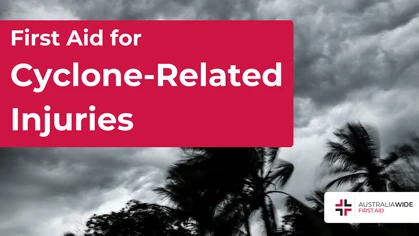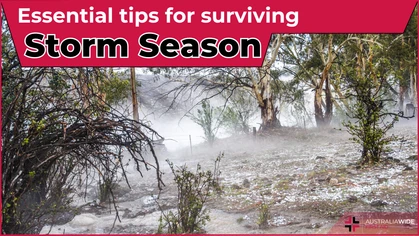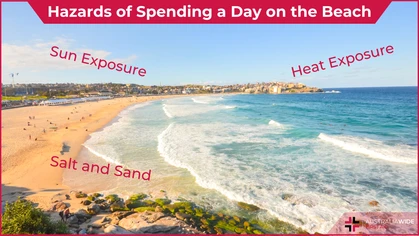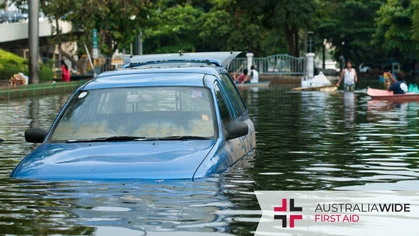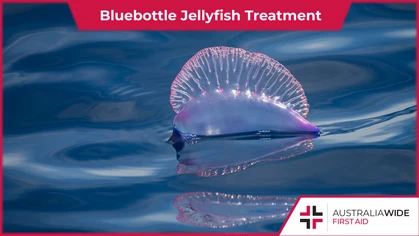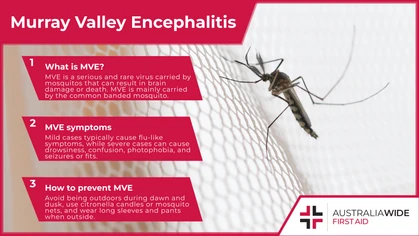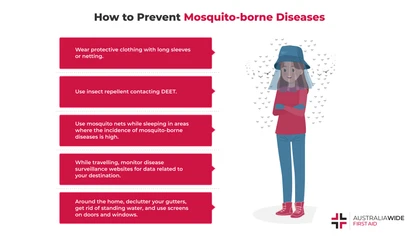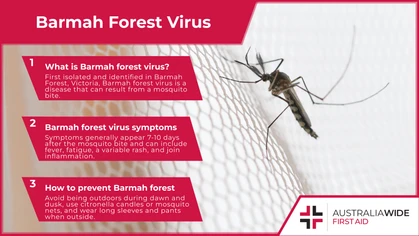Heat Exhaustion First Aid

Seasonal Concerns
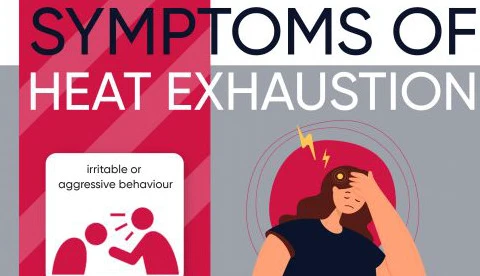
Symptoms of Heat Exhaustion
First aid treatment for heat exhaustion is a critical intervention. Heat exhaustion is a precursor to the more serious, life-threatening type of heat-induced illness, heat stroke. First Aid treatment for heat exhaustion is aimed at cooling the body in order to prevent heat stroke where brain damage, as well as damage to other vital organs, even death, can result. Exposure to high temperatures and humidity can induce heat cramps, heat exhaustion and/or heat stroke. The optimum temperature in the human body is 36–37º C. Excessive variation to this will have detrimental effects.What is heat exhaustion?
Heat exhaustion is caused by exertion accompanied by heat, high humidity and, often, dehydration. [Heat exhaustion, unlike heat stroke, does not cause impaired mental function, confusion, or loss of consciousness. Internal body temperature does not go above 39° C (102°F).] There are two types of heat exhaustion: Water depletion – indicated by excessive thirst, weakness, headache, loss of consciousness. Salt depletion – indicated by nausea, vomiting, muscle cramps, dizziness. The body’s core temperature (internal temperature) is determined by factoring in the environmental heat and the body’s temperature. The normal core temperature is approximately 37° C (98.6° F). To maintain this, the body needs to regulate the heat gain from the environment (in cold weather, heat loss). Sweating — specifically the evaporation of sweat — is the body’s way of cooling itself. Hot, humid weather is not conducive to sweat evaporating, so the body is less able to cool itself efficiently, following over-exertion. Potential complications of heat exhaustion include:- Severe kidney injury
- Rhabdomyolysis, which can cause kidney failure, tea-coloured urine from an increase in the muscle protein myoglobin, irregular heartbeat, muscle pain, vomiting
- Liver failure
- Arrhythmia – a heartbeat that is too fast or too slow
- Delirium or coma
Causes of Heat Exhaustion
The reason for frequent cases of heat exhaustion in urban areas during hot weather is that air quality is compromised in built-up areas where atmospheric conditions tend to stagnate. Night times offer little relief, as the heat continues to radiate from the concrete and asphalt. To combat internal heat, the body will normally pump blood to the skin and release sweat. But the body’s ability to cool itself by sweating is hampered by summer humidity, as the already moist air is unable to absorb sweat from the skin. The ability to sweat is reduced in a person who is dehydrated because they will be lacking in both the water and essential salts (electrolytes) to sweat. This inability to cool down by sweating can lead to heat exhaustion.Heat Exhaustion Risk Factors
- High humidity – usually over 60%
- Liver or kidney conditions
- Intense physical work
- Underlying conditions that increase the chance of dehydration, such as diabetes or hyperglycaemia
- Injuries where part of the body is pinned down or compressed (crush injuries)
- Drug abuse
- Beta blockers, diuretics for heart and blood pressure
- Antipsychotics for psychiatric conditions
- Antihistamines for reducing allergy symptoms
- Sedatives & stimulants
What are the symptoms of heat exhaustion?
Common signs of heat exhaustion include:- irritable or aggressive behaviour
- rapid, shallow breathing
- red, flushed face
- cold, pale, damp skin, sometimes goosebumps
- nausea & vomiting
- excessive sweating
- cramps
- increased internal body temperature
- muscle weakness
- weak, rapid pulse
- headache
- low blood pressure or light-headedness when standing or bending over
- dizziness

How to treat heat exhaustion
Seek immediate medical attention if the person becomes confused or agitated, loses consciousness, or is unable to drink. Immediate cooling and urgent medical attention is essential if core body temperature (measured by a rectal thermometer) reaches or exceeds 40° C (104° F). A person experiencing heat exhaustion should:- Stop all activity & rest in a cooler place. An air-conditioned room is best for getting out of the heat and resting. If that’s not an option, find the nearest cool, shady place.
- Strip off excess clothing.
- Soak or spray with cool or cold water and if available, apply wrapped ice packs to the head, neck, groin and armpits.
- Fan vigorously, using whatever you can grab, e.g. a printed publication, a flipper (swimmer’s fin), a clipboard. While doing so, mist with cool water.
- Immerse. The most effective cooling means will be cool or ice-water immersion. Immerse the casualty up to their neck in a cool or ice bath (must be held at all times by multiple people to ensure airway) OR
- Cover all of their body with ice-soaked towels, swapping them frequently with fresh cold towels.
- Drink cool water or sports drinks once vomiting has ceased.
- Call 000 or 112 for emergency services if symptoms do not improve after 10 minutes of cooling treatment.

How long does heat exhaustion last?
Recovery, following quick and effective heat stroke treatment, will usually take a day or two in hospital. Generally there are few problems afterwards, although some heat stroke sufferers may be left with increased sensitivity to hot weather. If organ damage is detected, recovery from heat stroke will be considerably longer. It may take 2 months to a year. This damage is caused by swelling and ranges from fair to poor. As complications increase, the prognosis changes dramatically for the worse. When permanent damage has impacted the brain, the lungs, liver, kidneys, the effects will be long-term.How to prevent heat exhaustion
Staying hydrated and cool is the golden rule. Drink plenty of water or eletrolyte sports drink. Making your own oral-rehydration solution is simple. Boil 5 cups (1 litre) of water then stir in 6 teaspoons of sugar and ½ teaspoon of table salt. Cool before drinking. Add flavourings, if you wish, in the form of fruit juices, honey, maple syrup. Some rehydrating drinks and foods include:- Banana puree mixed with water
- Carrot soup
- Fresh fruit juices, ideally orange, pear, peach
- Green coconut water
- Gruel (cooked cereal + water)
- Rice water or congee
- Weak, non-caffeinated tea

Originally published at
https://www.australiawidefirstaid.com.au/resources/heat-exhaustion-first-aid
as part of the Australia Wide First Aid Articles Library
